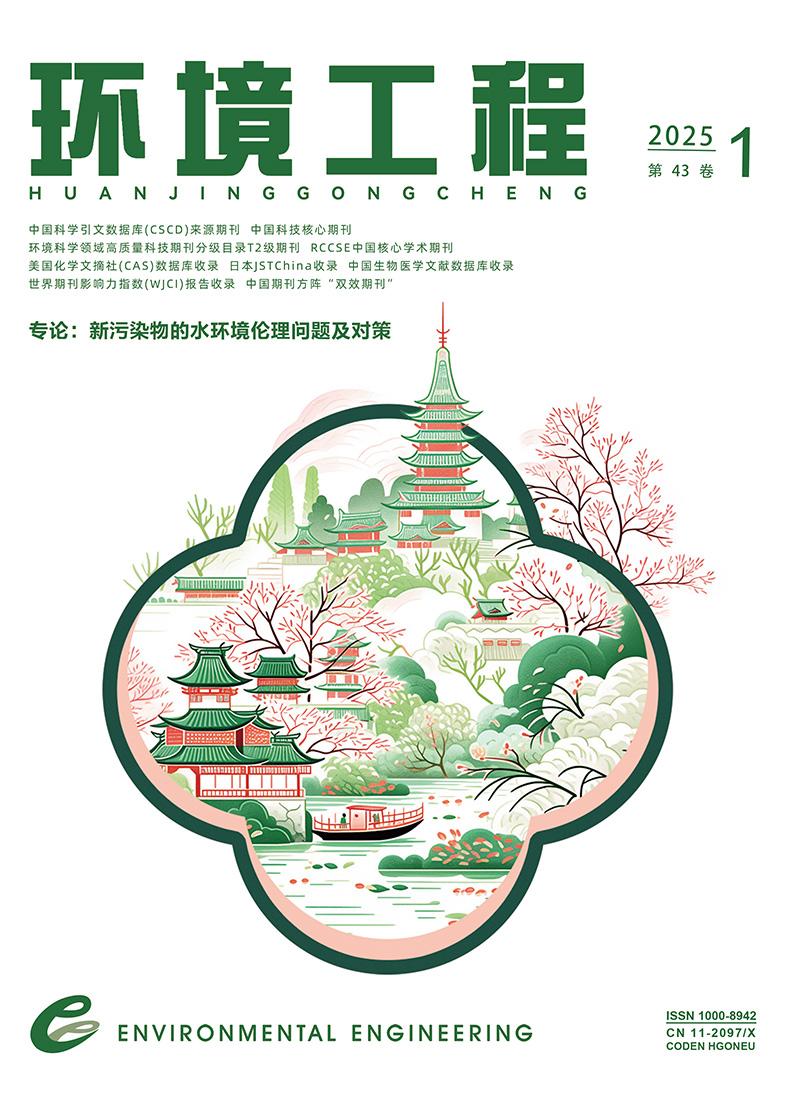| [1] |
MORGAN S F. Biofilm development, activity and the modification of carrier material surface properties in moving-bed biofilm reactors (MBBRs) for wastewater treatment[J]. Critical Reviews in Environmental Science and Technology, 2018,48(5):439-470.
|
| [2] |
黄青,杨平,杨忠启,等.MBBR和MBR工艺的污水处理效果与碳排放分析[J].中国给水排水, 2023,39(16):99-104.
HUANG Q, YANG P, YANG Z Q, et al. Analysis on the engineering effect and carbon emission of MBBR and MBR processes for treating sewage[J]. China Water & Wastewater, 2023, 39(16):99-104.
|
| [3] |
TAO C, PENG T, FENG C P, et al. The feasibility of an up-flow partially aerated biological filter (U-PABF) for nitrogen and COD removal from domestic wastewater[J]. Bioresource Technology, 2016,218:307-317.
|
| [4] |
BAI Y, ZHANG Y, QUAN X, et al. Enhancing nitrogen removal efficiency and reducing nitrate liquor recirculation ratio by improving simultaneous nitrification and denitrification in integrated fixed-film activated sludge (IFAS) process[J]. Water Science & Technology, 2016,73(4):827-834.
|
| [5] |
LIU S, LI Y, WANG J, et al. Enhancing biofilm growth in an integrated fixed-film activated sludge process through modification of polypropylene carriers[J]. Environmental Technology & Innovation, 2023,32:103353.
|
| [6] |
LI L, ZHANG J, TIAN Y, et al. Optimization of nutrient removal of novel electrochemically active carriers by response surface methodology[J]. Bioresource Technology, 2019,292:122000.
|
| [7] |
PHANWILAI S, KANGWANNARAKUL N, NOOPHAN P, et al. Nitrogen removal efficiencies and microbial communities in full-scale IFAS and MBBR municipal wastewater treatment plants at high COD∶N ratio[J]. Frontiers of Environmental Science & Engineering, 2020,14(6):1-13.
|
| [8] |
KRZYWICKA M, SZYMANSKA J, TOFIL S, et al. Surface properties of Ti6Al7Nb alloy: surface free energy and bacteria adhesion[J]. J Functional Biomaterials, 2022,13(1): 1-11.
|
| [9] |
JIA F, YANG Q, LIU X, et al. Stratification of extracellular polymeric substances (EPS) for aggregated anammox microorganisms[J]. Environmental Science & Technology, 2017,51(6):3260-3268.
|
| [10] |
HERMANSSON M. The DLVO theory in microbial adhesion[J]. Colloids and Surfaces B: Biointerfaces,1999,14(1/4):105-119.
|
| [11] |
苑泉,王海燕,刘凯,等.污水厂尾水MBBR反硝化深度脱氮填料比较[J].环境科学学报, 2015,35(3):713-721.
YUAN Q, WANG H Y, LIU K, et al. Comparison of the MBBR denitrification carriers for advanced nitrogen removal of wastewater treatment plant effluent[J]. Acta Scientiae Circumstantiae, 2015, 35(3):713-721.
|
| [12] |
ZHANG P, CHEN Y P, GUO J S, et al. Adsorption behavior of tightly bound extracellular polymeric substances on model organic surfaces under different pH and cations with surface plasmon resonance[J]. Water Research, 2014,57:31-39.
|
| [13] |
韩红波,王成显,牟悦,等.北方城镇污水处理厂提标扩容 HPB 技术中试研究[J].中国给水排水, 2023,39(13):81-87.
HAN H B, WANG C X, MU Y, et al. Pilot test of HPB technology applied upgrading and expansion of a municipal wastewater treatment plant in North China[J]. China Water & Wastewater, 2023, 39(13):81-87.
|
| [14] |
SINGH N K, PANDEY S, SINGH R P, et al. Effect of intermittent aeration cycles on EPS production and sludge characteristics in a field scale IFAS reactor[J]. Journal of Water Process Engineering, 2018,23:230-238.
|
| [15] |
YIN C, MENG F, CHEN G H. Spectroscopic characterization of extracellular polymeric substances from a mixed culture dominated by ammonia-oxidizing bacteria[J]. Water Research, 2015,68:740-749.
|
| [16] |
YUAN S J, SUN M, SHENG G P, et al. Identification of key constituents and structure of the extracellular polymeric substances excreted by Bacillus megaterium TF10 for their flocculation capacity[J]. Environmental Science & Technology, 2011,45(3):1152-1157.
|
| [17] |
WANG B B, LIU X T, CHEN J M, et al. Composition and functional group characterization of extracellular polymeric substances (EPS) in activated sludge: the impacts of polymerization degree of proteinaceous substrates[J]. Water Research, 2018,129:133-142.
|
| [18] |
LIAO B Q, ALLEN D G, DROPPO I G, et al. Surface properties of sludge and their role in bioflocculation and settleability[J]. Water Research, 2001,35(2):339-350.
|
| [19] |
BADIREDDY A R, KORPOL B R, CHELLAM S, et al. Spectroscopic characterization of extracellular polymeric substances from Escherichia coli and Serratia marcescens: suppression using sub-inhibitory concentrations of Bismuth Thiols[J]. Biomacromolecules, 2008,9(11):3079-3089.
|
| [20] |
BADIREDDY A R, CHELLAM S, GASSMAN P L, et al. Role of extracellular polymeric substances in bioflocculation of activated sludge microorganisms under glucose-controlled conditions[J]. Water Research, 2010,44(15):4505-4516.
|
| [21] |
TSUNEDA S, AIKAWA H, HAYASHI H, et al. Extracellular polymeric substances responsible for bacterial adhesion onto solid surface[J]. FEMS Microbiology Letters, 2003,223(2):287-292.
|
| [22] |
RITTMANN B E. Biofilms, active substrata, and me[J]. Water Research, 2018,132:135-145.
|
| [23] |
WANG J F, DING L L, LI K, et al. Estimation of spatial distribution of quorum sensing signaling in sequencing batch biofilm reactor (SBBR) biofilms[J]. Science of the Total Environment, 2018,612:405-414.
|
| [24] |
SEKINE M, AKIZUKI S, KISHI M, et al. Simultaneous biological nitrification and desulfurization treatment of ammonium and sulfide-rich wastewater: effectiveness of a sequential batch operation[J]. Chemosphere, 2020, 244:125381.
|
| [25] |
LIANG Z S, SUN J L, ZHAN C G, et al. Effects of sulfide on mixotrophic denitrification by Thauera-dominated denitrifying sludge[J]. Environmental Science: Water Research & Technology, 2020,6(4):1186-1195.
|
| [26] |
DERWIS D, MAJTACZ J, KOWAL P, et al. Integration of the sulfate reduction and anammox processes for enhancing sustainable nitrogen removal in granular sludge reactors[J]. Bioresource Technology, 2023,383:129264.
|
| [27] |
ZHANG L, QIU Y Y, ZHOU Y, et al. Elemental sulfur as electron donor and/or acceptor: mechanisms, applications and perspectives for biological water and wastewater treatment[J]. Water Research, 2021,202:117373.
|


 Login
Login Register
Register E-alert
E-alert






 DownLoad:
DownLoad: